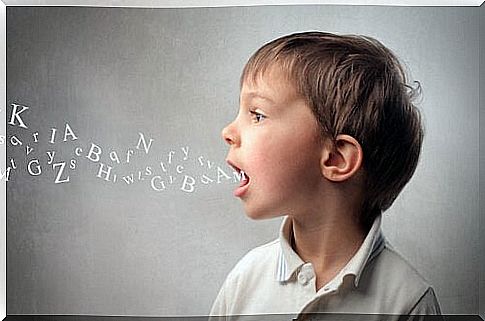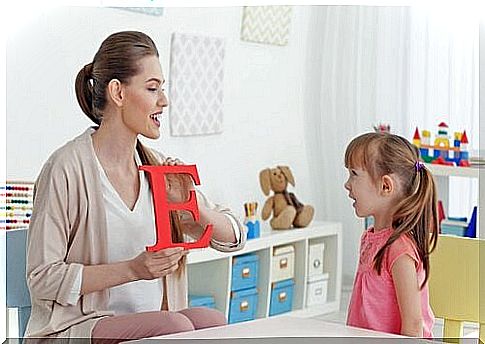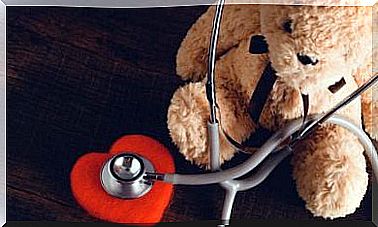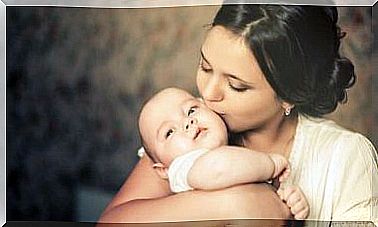The Most Common Language Errors In Children Aged 3 To 6

When children start to speak, they make a series of language mistakes that result from their learning process. In fact, sometimes we get alarmed when we see our child saying simple three-word sentences or barely speaking, but this doesn’t have to be seen as a problem. So it’s important to know when to start worrying or when to mistake these little mistakes for just phases of their development process.
It should also be borne in mind that some of these mistakes are also frequently made by adults: they are the famous lapsus linguae. Unintentional mistakes we make when we want to say one word but say another or when we unwittingly exchange concepts.
This is because our thoughts are sometimes not grammatically armed in our mind. Therefore, we have to carry out a process of choosing the most suitable words. Now let’s take a look at the most common language errors in 3-6 year olds depending on the affected unit.
Semantic errors (lexicon and meaning)
Semantically, between 2 and 3 years old, children make a lot of progress in the process of categorization and conceptualization. Thus, they begin to produce and understand a large number of senses, even if they do not yet reach the level of older children or adults. In fact, between the ages of 2 and 6, children normally learn 5 words per day. Do the math!

When they start to use a new word, children are unaware of its true meaning. Little by little, they learn and reduce this semantic difference thanks to their errors (trial-error) and to those around them. In other words, they gradually determine the meaning of the concepts. However, during this learning process, two types of linguistic errors occur:
- Because of a mismatch: these errors appear when the child refers to one thing but using another word. For example, he calls a soft toy “balloon” or says “car” for a dog. Even if they are unusual, they are the result of an inadequacy between the signified and the signifier.
- By dissimulation: these errors are more frequent than the preceding ones and occur when there is a partial coincidence between the meaning that the child gives to a word and the real or adult meaning. They are divided into two types.
- Overextensions are the most common at this age. They arise when the little one extends the meaning of a concept to things, places or people who have common features with it. For example, when he says “mom” to all the women he interacts with or “dog” to all the animals that have four legs.
- Sub-extensions represent the opposite. These are limitations of the semantic field of the word. They occur when the child calls the chairs in his kitchen, and only these, “chair”.
Phonological errors (sounds)
Phonological errors are linguistic errors that occur in phonemes, the smallest unit of language. Sometimes these errors affect the whole word, syllables of the latter, or just a few phonemes. Thus, children sometimes do not pronounce the dull syllables, “eat” letters or do not pronounce the final consonant of words.
They are divided into several types:
- Anticipation (“I have plenty on my plate!”)
- Of perseverance (“he can no longer escape us”)
- Phoneme exchange (“tractors”> “tactreurs”)
Some children pronounce a very limited number of phonemes but do it very well. Others, more intrepid, choose to try to articulate words that are beyond their capabilities. In general, each child has their own joint preferences.
Morphosyntactic errors
Morphology and syntax are two basic components of the language. Children, during the development of this morphosyntactic component, normally resort to different acquisition mechanisms.
Children are like parrots. They repeat everything they listen to, even what they shouldn’t. This is why when parents say ready-made sentences, proverbs or linguistic formulas, they try to copy them. But they remember it as a whole, as a whole. Not word by word.
Therefore, when they imitate them and reproduce them out loud, without being aware of how these sentences were constructed, they can only say them in the context in which they learned them. For example, if they hear their mother say “you are beautiful today” to her husband, the children will choose to reproduce those same words at home and in the same situation. They will not generalize this formula.
Likewise, when they learn, 3-year-olds do not know how the language is structured. They ignore grammatical rules and don’t know that words are constructed from certain criteria. They therefore learn syntactic forms that are independent and isolated from each other.
As time goes on, they realize that there are rules they must abide by and push them to the extreme. This is what we know under the term hyper-regulation (“I save”> “I know”).

When to start worrying?
There are certain types of language behaviors which may be inappropriate for their age and which may indicate a delay in language acquisition and development. Here are a few :
- Incorrect articulation of most sounds.
- Use of isolated or very poor sentences. Use of sentences that are only three words or less (up to 36 months is normal).
- Systematic omission of verbs, prepositions, pronouns or articles in sentences.
- The vast majority of their oral broadcasts are unintelligible and almost incomprehensible.
- Excessive use of the language of gestures to make oneself understood.
- Poor vocabulary and lexicon. They don’t seem to gradually acquire words.
Nevertheless, the linguistic errors of the child are not the symptom of a delay in the development of his linguistic faculties. Quite the contrary. They indicate that the little one is progressing and beginning to understand the language system (Borregón, 2008).










